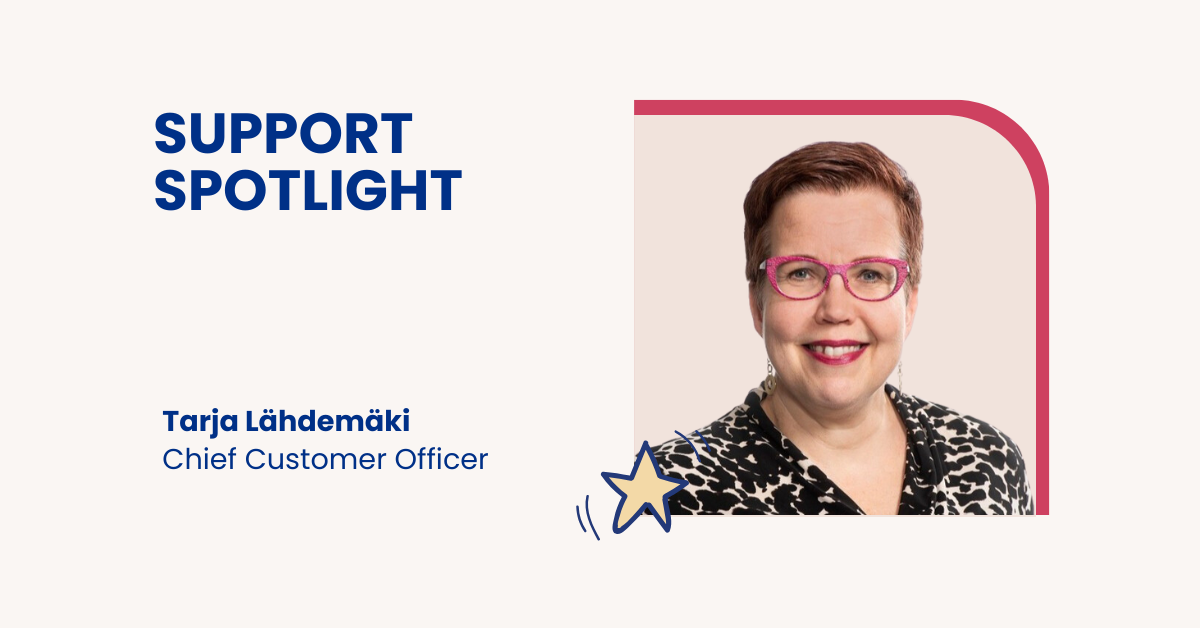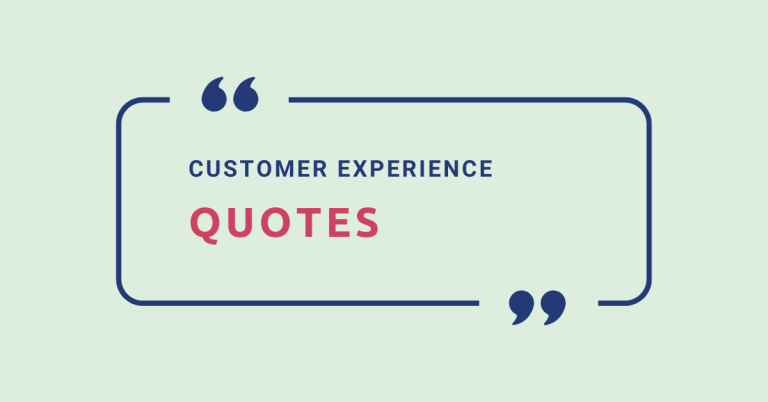In the ever-evolving landscape of the B2B market, customer retention is a paramount challenge for businesses striving to maintain a competitive edge. Enter Tarja Lähdemäki, an esteemed consultant from Finland with a wealth of experience in guiding B2B companies towards customer-centricity and deeper understanding of their clients’ needs. In this interview, we delve into her expertise and she speaks about the strategies she employs to help businesses forge lasting connections with their customers.
Can you tell us about your journey? How did you end up working in CX?
I have been in this field for a long time, tracing back to the 90s. As a young professional with a master’s degree in international marketing, I joined a telecom company called Telecom Finland, today known as Telia. Early on, I was tasked with creating target groups for a large-scale campaign targeting around 200,000 small and medium-sized companies. Despite not having learned this skill in school, I took on the challenge, learning to use the necessary tools within two days.
From that point forward, I immersed myself in customer data, market research, and segmentation, primarily in the B2B sector. Over a span of 14 years, I specialized in developing target groups for sales and marketing purposes. Even back then, we embraced marketing automation, albeit with different tools than what we have today. I invested in CRM and marketing automation technologies, expanding my knowledge of the field.
After leaving TeliaSonera in 2008, I transitioned into consulting as a business customer experience professional. My work extended to both B2B and B2C contexts, collaborating with agencies and digital service design firms. However, my primary focus remained on customer research and delivering exceptional customer experiences.
How does a typical day look like for you at work? When you start a project, what steps do you go through when working with your clients?
There is no typical day for me because our B2B customers are quite diverse. Most of our clients are in the technology sector, including IT and cloud companies. When it comes to working with our clients, we primarily focus on developing customer insight and experience including also (CX) measuring modules. We also conduct a lot of customer voice sessions, deep interviews, and market studies through research and surveys.
When starting a project, we request background information from our clients about their customers. We want to know what kind of surveys or studies they have conducted and what they already know about their customers. This serves as the foundation for our work. Gathering this information varies from case to case. Sometimes the client has limited knowledge, while other times they possess a wealth of customer insights.
You work with clients at various stages of maturity in their customer experience journey. What are the key challenges these clients encounter and why do they turn to you for help?
Our clients usually reach out to us when they realize that they are no longer experiencing growth. They often struggle with understanding why this is happening and how to attract new customers. The main reason they contact us is that they believe gaining a better understanding of their customers can help address these challenges.
When clients approach us, they are looking for guidance on what they should know about their customers, how to start gathering that information, and what steps to take. They feel puzzled and uncertain about how to create customer value, which happens to be my favourite topic. Customer value refers to the value that customers perceive when they interact with a company. It can encompass emotional, social, economic, and functional value. Companies need to understand that by creating value for their customers, they can eventually generate revenue. It’s important to note that money follows the creation of value, not the other way around.
One of the biggest challenges for directors in B2B companies is recognizing that customers are no longer just objects to sell and market to. Customers want to co-create with companies, be involved, and have their voices heard. This is especially true for younger generations. They ask questions such as, “Why should I buy from you? Do you care about the environment? Do you share our values?” Emotional value also plays a significant role in both B2C and B2B contexts.
Even in B2B interactions, it’s crucial to remember that it’s always human to human. Employees of organizations are human beings outside of their professional roles. When making purchasing decisions, they consider their employers’ goals, the organization’s purpose, and the services they need to succeed. Understanding these dynamics is essential for effective sales and marketing in the B2B sphere. It’s a complex process that requires a deep understanding of customer value and the human aspect of business interactions.
When companies are seeking to comprehend the reasons behind declining sales or customer attrition, they frequently resort to market research. However, these organizations often fail to effective leverage data about their existing customers. In your opinion, what are the opportunities that arise from utilizing this existing customer data?
Having a clear understanding of the customer value promise is crucial. Many customer promises tend to be vague, but it’s important to have a specific value promise that aligns with the organization’s purpose, target audience, and how it serves them.
To succeed, a company must know its target customers and their perception of the business. By tailoring the value promise accordingly and measuring the customer experience, the company can fulfil its promise. Without measuring, the company remains unaware of how customers perceive its value and service.
Surprisingly, many companies lack clear value promises. When engaging with potential clients, I often check their website for a customer value promise. If it’s missing, it indicates that they don’t have one. A value promise should be understandable, meaningful, and differentiate the organization from its competitors.
A clear value promise sets the company apart from the competition. When customers can’t perceive any difference between organizations, price becomes the only factor. Engaging in a price competition leads to choosing the lowest price, perpetuating a race to the bottom. Winning in a price competition is challenging because constantly lowering prices doesn’t typically yield favourable outcomes for the company.
You mentioned the importance of measuring the customer experience to avoid being in the dark. Once a company has established a proper value proposition, they may want to measure the customer experience to identify any gaps or issues. What would be the best approach to gather data on the customer experience?
I recommend using various methods for measuring the customer experience, including customer voice and deep diving into customer motives and expectations. After conducting customer listening sessions, it is important to validate the insights gathered through service questionnaires or surveys. This helps ensure consistency and provides a broader perspective by including a larger number of customers.
Oftentimes, conducting in-depth interviews with a large number of customers is not feasible due to time constraints. One option is to start with a quantitative survey to obtain initial insights. However, people are often reluctant to provide detailed feedback and prefer quick checkbox responses. You can include open-ended questions in surveys but acknowledge that most respondents may be too lazy to write extensive responses. And the ones who do respond tend to be motivated by strong emotions, whether positive or negative.
Both research methods are needed as they serve different purposes. Qualitative research allows for a deep dive into specific experiences, while quantitative research validates findings among a larger customer base. Both approaches are necessary to gain a comprehensive understanding of the customer experience.
What advice would you give to someone starting in Customer Experience?
As a young professional, I would ask the employer about our value promise to customers. I would challenge the Board of Directors, my boss, and everyone involved in customer interactions to clarify what exactly we are promising. What value are we creating for our customers? What kind of value do we commit to delivering?
I would suggest striving to follow that path, as I mentioned earlier, and demanding answers regarding value creation. We should focus on differentiated and meaningful value and how we differentiate ourselves from other service providers.
Additionally, we should aim for a specific customer experience. We need to ask for permission to start measuring and create a model to track it. Without these elements, it is difficult to work as a CX (Customer Experience) professional.
I understand that this poses a significant challenge because many companies do not have these practices in place.
It’s important to note that my experience, spanning over 30 years, primarily lies in the B2B (business-to-business) domain.
How do you perceive the role of your business in relation to your clients’ objectives for the future? How can companies become more proactive and anticipate their retention challenges before it becomes an issue?
Companies need to be more interested in their customers. It’s not enough to just tell them that you are interested. The realization I often have during customer interviews, is that the service provider I work for should already know what this customer is telling me.
It’s important to engage with your customers beyond just discussions around our own products or solutions. This is the greatest challenge in B2B sales. Salespeople should think more thoroughly what could be interesting to their customers and aim to have a real understanding of their customers’ businesses and the specific challenges they aim to solve.
To be able to solve your customers’ business challenges, you must first understand their businesses well enough. Then, you have to offer solutions to those problems. But it’s not about simply cobbling together products A, B, and C and claiming it solves their problems. The customer might ask, ‘What problem?’
To succeed, you not only need to understand, but you also need to be understandable. You have to listen to your customers and be eager to dig deeper. You should strive to create solutions and provide value. Because if you fail to do that, someone else will step in and create value for your customers.
What is the difference between a company that genuinely listens to its customers and one that is solely focused on its own product?
So, the companies that don’t listen to their customers end up engaging in a price fight. They constantly lower their prices, but ultimately, they may face failure because it’s not sustainable to keep reducing prices and remain profitable. It’s as simple as that. However, if you listen to your customers and understand the value they seek, you can strive to develop more value for them, leading to better pricing for your products or services. You can grow together with your customers by creating value in collaboration. In fact, some companies excel at this and go beyond by creating entirely new value that wouldn’t exist without their efforts. This is what we call innovation. Such companies do exist today, and they are able to grasp the importance of understanding and responding to customer needs.

Tarja Lähdemäki
Tarja Lähdemäki has more than 20 years of experience promoting customer-oriented business at both a strategic and hands-on level in marketing, sales and as a consultant. With a remarkable track record in leveraging research to drive meaningful insights, Tarja has revolutionized the way organizations in Finland approach customer retention. From her unique perspective on the power of research to her practical insights on nurturing customer relationships, Tarja Lähdemäki sheds light on the transformative potential of adopting a customer-centric approach to business strategy.
Did you like the post?
You might also like:

Surveypal
Everything you need to lead and improve your customer experience. Learn more at surveypal.com, or






